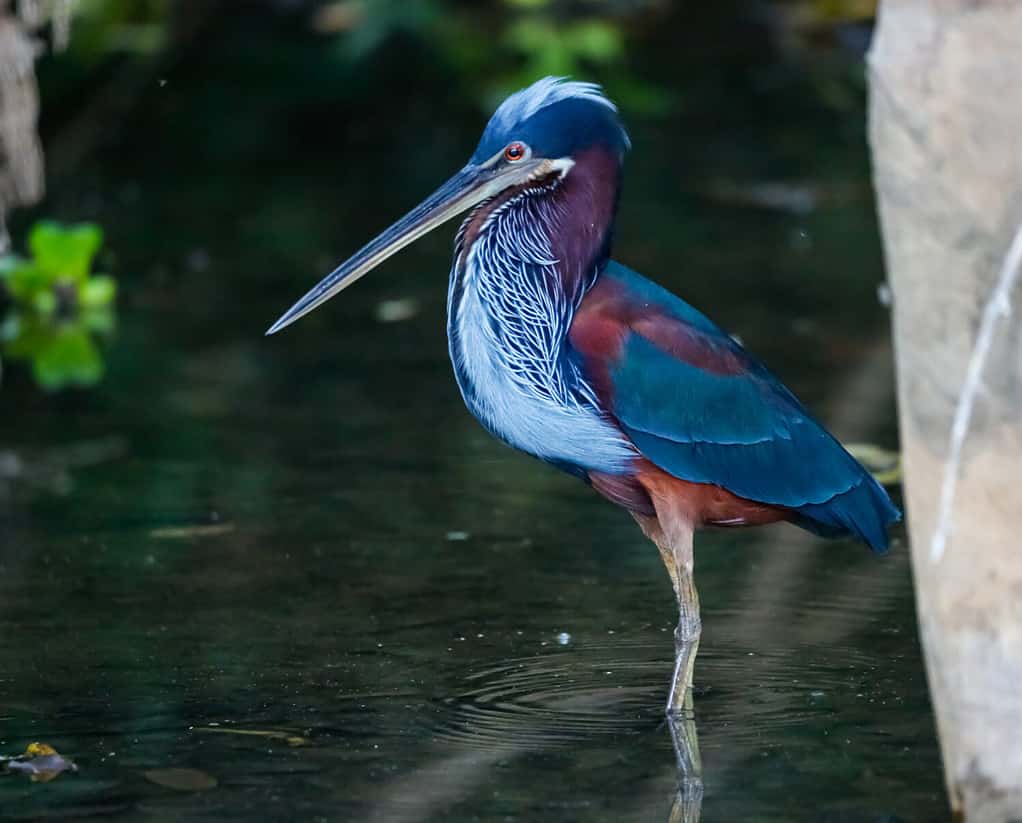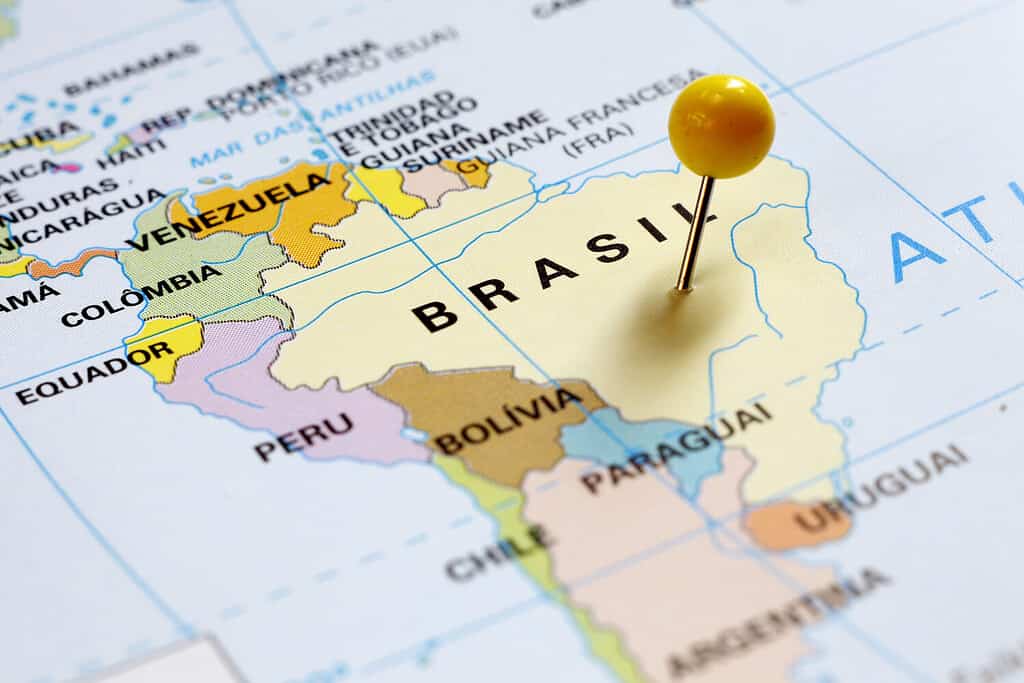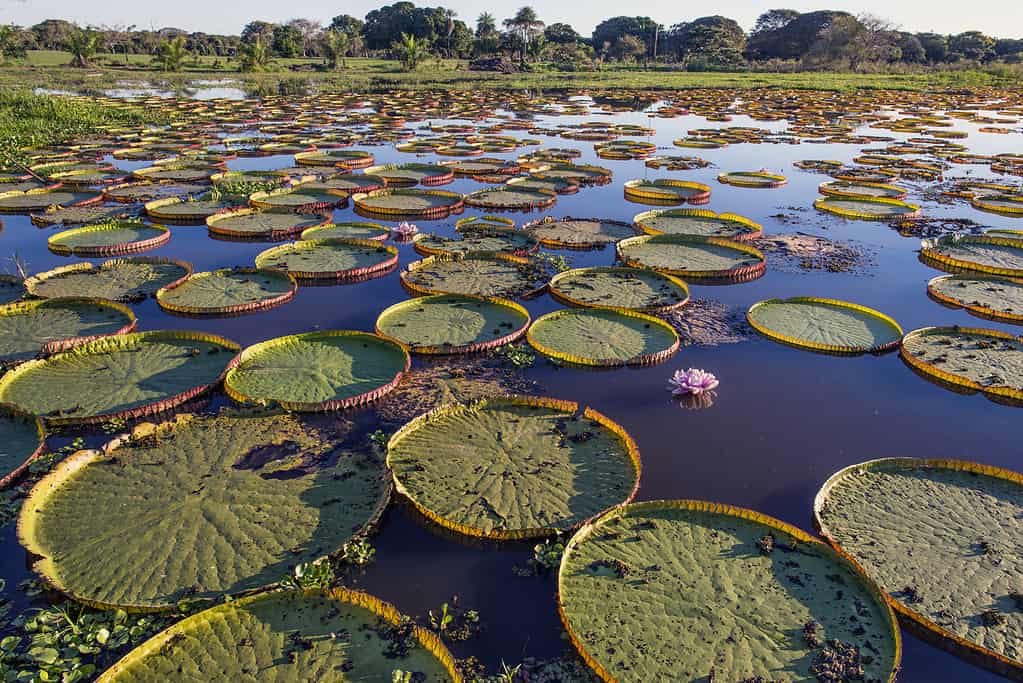
Animals and wildlife are found in abundance in the largest freshwater wetland in the world.
©elleon/iStock via Getty Images
Wetlands are found throughout the world. There are plenty of small wetlands out there that are just as important as decent-sized and large ones. However, nothing can quite match the awe of seeing the largest freshwater wetland in the world.
Curious about what wetland has the size to be considered the largest freshwater wetland in the world? Or maybe you want to know where it is and some of the wildlife that is in the area? Wait no longer, keep reading and find out for yourself.
What Is the Largest Freshwater Wetland in the World?

You can find all sorts of rare animals hanging out on and in the water of the largest freshwater wetland in the world.
©Uwe Bergwitz/Shutterstock.com
The Pantanal has the honor of being the largest freshwater wetland in the world. It covers almost 137,000 square miles. This makes it over 20 times the size of the Everglades in Florida. The wetland is at its fullest from October to March. From April to September the water drains slowly until it’s time to be refilled. During its peak, roughly 80 percent of the floodplains are submerged.
Studies into this wetland have found that there are 12 distinct ecosystems inside its borders. Each ecosystem has distinct hydrological, geological, and ecological characteristics. There may be more that haven’t yet been found.
The name, “Pantanal” comes from the Portuguese word for swamp (pantano) and the suffix for abundance (-al). So essentially, its name means an abundance or collection of swamps. Despite the name, it’s not actually a swamp. It’s mostly considered a floodplain, though it could also be classified as a marsh.
Where Is The Pantanal Located?

The Pantanal is mostly in Brazil, but it does stretch a little into Bolivia and Paraguay.
©rocharibeiro/Shutterstock.com
The Pantanal is so large that it stretches across three countries. It’s located in South America and covers 42 million acres, which is larger than England. It reaches into parts of Bolivia, Brazil, and Paraguay.
This freshwater wetland is important for many reasons. Not only is it a hub for flora and fauna, but it’s essential for people too. Without the Pantanal, many places downstream would be flooded throughout the winter and spring months.
Because it’s a dependable source of water, it’s also a hub for a lot of agriculture. Cattle and soy in particular depend on the Pantanal for most of their water. Tourists also flock to this wetland, which helps out local communities greatly by providing jobs and bringing money into the community.
It’s estimated that it has managed to bring in more than $70 billion annually since 2015 when it comes to economics. When it comes to ecosystem services, however, it’s even more valuable. The Brazilian Agricultural Research Corporation (EMBRAPA) has estimated that based on the services the Pantanal does for the ecosystem, it’s worth at least $112 billion a year.
However, because this land is so vital to the local people, not much of it is protected. Only five percent of the land is protected out of the total wetland area. Many different groups are constantly fighting over the status of the land including conservationists, ranch owners, farmers, and policy makers.
Because so many people depend on this land for survival, it’s not likely that all of the land will end up preserved. Instead, there will be some mix of protected and public use areas so that people can still make a living.
Animals in the Pantanal
There are over 4,700 species of plants and animals in the Pantanal. For some animals that are slowly losing their habitats, The Pantanal is a lifeline. Jaguars and caimans, for example, depend on the Pantanal. This wetland is now home to the highest concentration of these species throughout the world.
Of the 4,700 different species of flora and fauna found in this wetland, a little over 200 species are mammals. None of these mammals are considered endemic, and there are some animals that are originally from somewhere else, such as the feral pig, European hare, and water buffalo. There are also 98 species of reptiles, 53 species of amphibians, 325 species of fish, and 650 species of birds that live or visit the area throughout the year.
Some other animals you’ll find in and around the Pantanal include:
- Marsh Deer
- Pampas Deer
- Capybaras
- Ocelots
- Snakebird
- Black Vultures
- Blue-and-Yellow Macaws
- Boa Constrictors
- Burrowing Owls
- Capuchin Monkeys
- Gold Tegus
- Parrot Snakes
- Swamp Turtles
You may notice from looking at this list, that many of the names are ones you’ve heard a lot about. That’s because roughly 12 percent of all the mammals within the Pantanal are considered to be globally endangered.
Plants in the Pantanal

Victoria water lilies are one of many aquatic plants found in the Pantanal region.
©drferry/iStock via Getty Images
Because of how much land the Pantanal takes up, and where its borders touch, there are many different kinds of plants in the area. You can find communities of rainforest plants, woodland plants, savanna plants, and various other kinds of forest and grassland plants.
It’s thought that roughly 2,000 different plants live in the Pantanal region. There is a mix of all sorts of different plants, including aquatic ones, grasses, shrubs, flowering plants, and trees.
Some plants you will find if you decide to explore the Pantanal include:
- Caranda Palm
- Acai
- Tucuma
- Common Water Hyacinth
- Pink Trumpet Tree
- Santa Cruz Water Lily
The photo featured at the top of this post is © AlexanderDavid/iStock via Getty Images
Thank you for reading! Have some feedback for us? Contact the AZ Animals editorial team.






